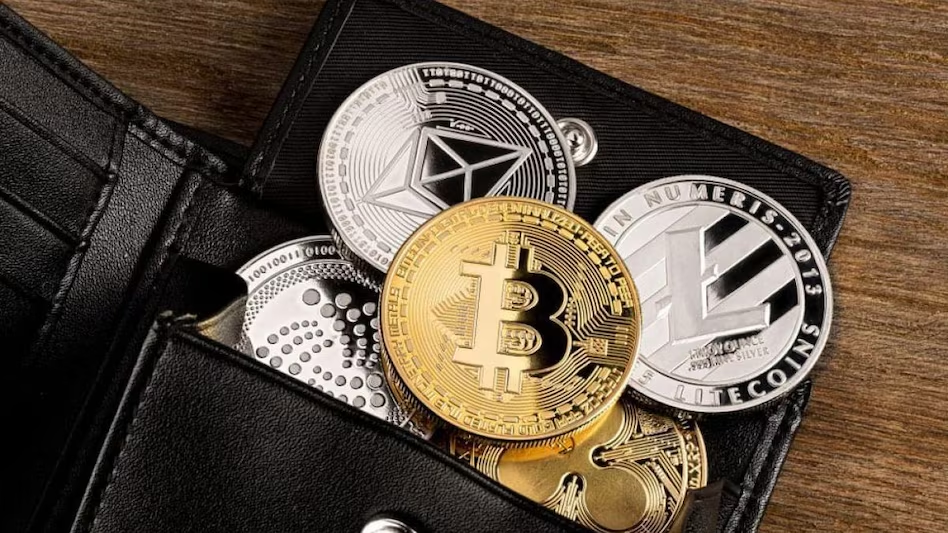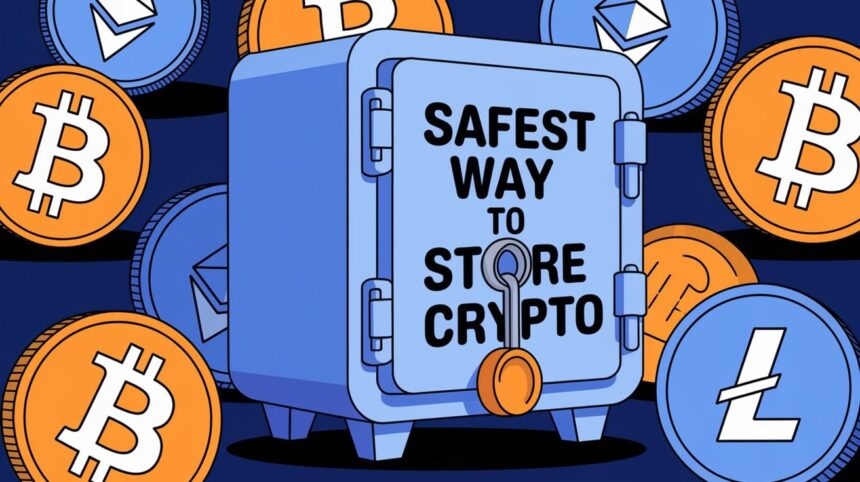Cryptocurrency has emerged as one of the most innovative financial tools of the 21st century, offering individuals greater control over their finances and the ability to conduct transactions securely and anonymously.
However, as with any form of wealth, cryptocurrency comes with its own set of challenges, particularly when it comes to safeguarding it from theft, loss, or damage. If you want to ensure that your digital assets remain protected, it’s essential to understand the best practices for securely storing your cryptocurrency.
In this comprehensive guide, we’ll walk you through everything you need to know about safely storing your cryptocurrency. From wallets and encryption to offline storage and security measures, these steps will help you protect your investment from cyberattacks and technical mishaps.
Understanding Cryptocurrency Storage
Before diving into the specific methods for storing cryptocurrency safely, let’s first break down the two primary types of storage: hot wallets and cold wallets.
1. Hot Wallets: Convenient but Vulnerable

Hot wallets are digital wallets that are connected to the internet. They make accessing and transacting with cryptocurrency easy and fast, which is ideal for people who actively trade or need quick access to their assets. However, because they are connected to the internet, they are more susceptible to hacking, phishing attacks, and malware.
Types of Hot Wallets:
- Online Wallets: Web-based wallets accessed via a browser.
- Mobile Wallets: Apps that you can install on your smartphone or tablet.
- Desktop Wallets: Software wallets installed on your computer.
While hot wallets offer convenience, it’s important to take precautions when using them. Always ensure you use reputable services, enable two-factor authentication (2FA), and avoid storing large amounts of cryptocurrency in hot wallets.
2. Cold Wallets: Secure but Less Accessible
Cold wallets, on the other hand, are offline storage options that are not connected to the internet. They are considered the most secure way to store cryptocurrency because they are not vulnerable to online attacks. If you’re serious about long-term cryptocurrency storage, a cold wallet is your best bet.
Types of Cold Wallets:
- Hardware Wallets: Physical devices, such as USB drives, that store your private keys offline.
- Paper Wallets: A printed document with your private keys and public addresses, which can be stored securely in a safe.
- Metal Wallets: A more durable option to store a paper wallet’s information.
Cold storage is the best way to store large amounts of cryptocurrency that you don’t plan on using frequently. They offer the highest level of protection, but the downside is that they are less convenient than hot wallets when it comes to accessing or trading your assets.
Best Practices for Safely Storing Your Cryptocurrency
Now that you understand the basic types of wallets available, let’s explore the best practices for securely storing your cryptocurrency.
1. Use Hardware Wallets for Long-Term Storage
If you’re storing a significant amount of cryptocurrency for the long term, investing in a hardware wallet is one of the safest options available. These wallets store your private keys offline, making them almost impervious to online hacks.
Some well-known hardware wallets include:
- Ledger Nano X
- Trezor Model T
- KeepKey
When choosing a hardware wallet, always buy directly from the manufacturer’s website to avoid the risk of receiving a tampered product. Never purchase a secondhand hardware wallet.
2. Enable Two-Factor Authentication (2FA)
For hot wallets, enabling two-factor authentication (2FA) is an essential step in enhancing the security of your account. 2FA requires you to provide a second form of verification (e.g., a code sent to your phone) in addition to your password.
While 2FA is not foolproof, it significantly reduces the chances of someone gaining unauthorized access to your wallet, even if they have your password. Be sure to use a reliable 2FA app like Google Authenticator or Authy.
3. Keep Your Private Keys Secure
Your private key is essentially the password to your cryptocurrency holdings. If someone gains access to your private key, they can control your funds. It’s critical to store this information securely and never share it with anyone.
Here are some tips for managing your private keys:
- Write it down: Avoid storing your private key in a digital format where it could be compromised, such as in your phone or computer. Write it down on paper or store it on a secure, offline device.
- Avoid Cloud Storage: Never store your private key in cloud storage services like Google Drive or Dropbox. These services are connected to the internet, which could expose your key to hackers.
- Use a Safe: If you store your private key on paper, keep it in a safe place, such as a bank safety deposit box or a personal fireproof safe.
4. Backup Your Wallet Regularly
Backing up your cryptocurrency wallet is crucial in case your device is lost, stolen, or damaged. Most wallets offer a seed phrase (a recovery phrase), which you can use to restore your wallet.
To back up your wallet:
- Write down the seed phrase on paper and store it in a secure location.
- Consider storing multiple copies in different locations for extra security.
- Never store your seed phrase online.
5. Beware of Phishing and Scams
Phishing attacks are common in the cryptocurrency world. Hackers may attempt to trick you into providing personal information or private keys by impersonating a legitimate service or wallet provider.
To protect yourself from phishing scams:
- Double-check URLs: Always make sure you’re on the official website before entering any sensitive information.
- Avoid clicking on suspicious links in emails or social media messages.
- Be cautious when receiving unsolicited communications offering “free” cryptocurrency or services.
6. Use Multi-Signature Wallets
Multi-signature (multi-sig) wallets add an extra layer of security by requiring more than one signature to authorize a transaction. This means that even if one of your private keys is compromised, the attacker cannot access your funds without additional keys.
Multi-sig wallets are particularly useful for businesses or individuals who store large amounts of cryptocurrency. They provide additional protection by requiring multiple parties to approve a transaction.
7. Keep Your Devices Secure

Whether you use a hot or cold wallet, the security of your devices is critical to keeping your cryptocurrency safe. Always ensure that your computer, smartphone, or any other device you use to access your cryptocurrency wallet is secure.
Here’s how to enhance device security:
- Use antivirus and anti-malware software.
- Regularly update your operating system and software to patch any vulnerabilities.
- Avoid using public Wi-Fi networks when accessing your cryptocurrency wallet.
8. Diversify Your Storage
Don’t store all your cryptocurrency in one wallet or on a single device. Diversifying your storage methods can reduce the risk of losing everything if one wallet or device is compromised.
Consider storing some of your cryptocurrency in hot wallets for easy access and the rest in cold wallets for long-term security. This way, you’re spreading out the risk and ensuring you always have access to at least a portion of your holdings.
9. Monitor Your Cryptocurrency Regularly
Although cold storage is the most secure, it’s still essential to monitor your cryptocurrency portfolio. Regularly check the status of your investments and ensure that there are no unusual activities or unauthorized transactions.
Many cryptocurrency services offer alerts that notify you of any changes in your wallet. Make sure to set up these alerts to stay on top of your holdings.
Protect Your Investment
Cryptocurrency is a powerful financial tool, but with great power comes great responsibility. To keep your cryptocurrency safe, you must take proactive steps to protect your private keys, use secure storage methods, and be vigilant against scams and hacks.
By following the best practices outlined in this guide—whether that means using hardware wallets, enabling two-factor authentication, or regularly backing up your wallet—you can ensure that your digital assets are well-protected and remain safe from threats.
Remember, the key to securing your cryptocurrency is a combination of the right tools, consistent vigilance, and awareness of potential risks. Take the time to safeguard your assets, and you’ll be able to enjoy the benefits of cryptocurrency with peace of mind.

